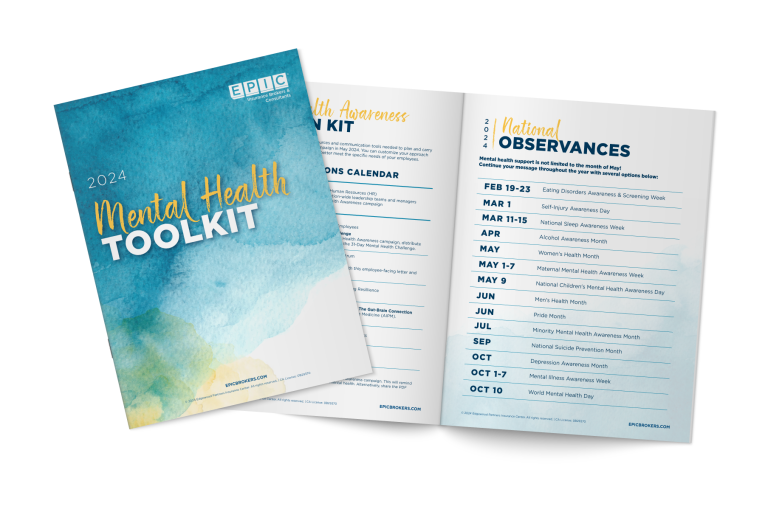COMPLIANCE ALERT
Transparency Requirements & Surprise Billing – Agency FAQs Offer Several Delays
Quick Facts
- On August 20, 2021, the Departments released as several frequently asked questions (FAQs) clarifying requirements and effective dates set forth in the transparency in coverage (TiC) final rules and the Consolidated Appropriations Act (CAA).
- Requirements for public website disclosures and price comparison tools have new effective dates.
- Requirements for good faith estimates, explanation of benefits and pharmacy reporting are delayed indefinitely.
- Certain surprise billing disclosure, requirements for ID cards, provider directories and continuity of care will remain effective in 2022.
- Prohibition on gag clause requirements are already in effect with additional requirements effective in 2022.
Background
On August 20, 2021, agency guidance was released as several frequently asked questions (FAQs) clarifying requirements and effective dates set forth in the transparency in coverage (TiC) final rules and the Consolidated Appropriations Act (CAA). Many of the transparency in coverage and surprise billing requirements are delayed, with some requirements delayed indefinitely until further guidance is provided. However, there are a few requirements that will go into effect in 2022 as originally indicated.
Group Health Plan Application & Responsibility
The transparency in coverage rules apply to most group health plans, but not grandfathered health plans, excepted benefits (including limited scope dental or vision benefits), or health reimbursement arrangements (HRAs).
The CAA requirements apply similarly, but there is no exception for grandfathered health plans.
For fully insured plans, the requirements will be handled by the carrier. For self-funded plans, the requirements will generally be handled by third party administrators (TPAs), since employers will not have the information or resources required to comply. However, employers are ultimately responsible for ensuring that the TPAs follow through on meeting such requirements. For more information about the TiC rules see the Health Plan Cost Transparency Update Compliance Matters alert.
Transparency in Coverage and CAA Requirements & Effective Dates
Public Website Disclosure – New Effective Dates
Under the TiC rules, plans are required to disclose the following information on their public website:
- In-network provider rates for covered items and services;
- Out-of-network allowed amounts for covered items and services; and
- Negotiated rates and historical net prices for covered prescription drugs.
The requirement to make this information publicly available was originally effective for plan years beginning on or after January 1, 2022, but the requirement to post information about in-network provider rates and out-of-network allowed amounts is delayed until July 1, 2022, and the requirement to post information about prescription drug coverage prices is delayed indefinitely until further guidance is provided.
Price Comparison Tool – New Effective Date
Under both the transparency in coverage rules and the CAA, plans are required to develop and make available an internet-based, self-service tool for comparing the prices of items and services. The information must also be available in paper form upon request, as well as via telephone. The tool would provide information about cost-sharing for items and services obtained in-network as well as the allowed amounts for the same items and services obtained out-of-network.
The transparency in coverage rules and the CAA impose similar requirements, but with different effective dates. The CAA requires such tool to be available for plan years beginning in 2022, while the transparency in coverage rules requires such tool to be available until plan years beginning 2023. The guidance indicates a delay in the requirements set forth under the CAA to align with the effective dates set forth in the transparency in coverage rules. The price comparison tool is therefore required to be available as follows:
- For 500 specified items and services for plan years beginning in 2023.
- For all covered items and services for plan years beginning in 2024.
Good Faith Estimates & Advanced Explanation of Benefits – Now Delayed Indefinitely
Provider Requirements
Under the CAA, when individuals request items or services from a provider, the provider is required to ask the individual whether the individual has health insurance coverage.
- If the individual has coverage, the provider is required to send a good faith estimate of the expected charges, along with the billing and diagnostic codes, to the individual’s plan.
- If the individual does not have coverage, the provider is required to send such good faith estimate directly to the individual.
Originally, the requirements were to go into effect for plan years beginning in 2022. However, the requirement to provide a good faith estimate to the individual’s plan (for those with health insurance coverage) is delayed indefinitely until further guidance is provided. While not clearly addressed in the FAQ, providers may still need to provide an advance good faith estimate to those individuals without health insurance coverage.
Plan Requirements
Under the CAA, plans that receive an advance good faith estimate from the provider (as outlined above) are then required to provide an advanced explanation of benefits (EOB) to the individual including the following information:
- The network status of the provider or facility;
- The contracted rate for the item or service, or if the provider or facility is not a participating provider or facility, a description of how the individual can obtain information on providers and facilities that are participating;
- The good faith estimate received from the provider;
- A good faith estimate of the amount the plan or coverage is responsible for paying, and the amount of any cost-sharing for which the individual would be responsible for paying with respect to the good faith estimate received from the provider; and
- Disclaimers indicating whether coverage is subject to any medical management techniques.
Similar to the provider requirements, the requirement to provide such advanced EOBs was originally supposed to go into effect for plan years beginning in 2022, but the requirement has been delayed indefinitely until further guidance is provided.
Pharmacy & Prescription Drug Reporting – Now Delayed Indefinitely
Under the CAA, plans are required to report the following information to the agencies annually:
- Plan year dates;
- Number of plan participants;
- States where coverage is provided;
- 50 most frequently dispensed drugs and paid claims for each such drug;
- 50 most costly prescription drugs and total annual spending for each such drug;
- 50 drugs with the greatest increase in plan expenditures from the preceding plan year and the change in amounts for each such drug;
- Total spending by plan broken down by category, including spending on prescription drugs;
- Monthly premiums paid by employers and employees; and
- Information about rebates, fees and remuneration by drug manufacturers.
The first report was set to be due by December 27, 2021, with annual reporting required by June 1 in subsequent years, beginning in 2022. This reporting requirement is delayed indefinitely until further guidance is provided.
Surprise Billing Balance Bill Disclosures – Effective in 2022
Under the CAA No Surprises Act, effective for plan years beginning in 2022, a plan must make information available on its public website and on any EOBs outlining the new balance-billing limitations that apply for out-of-network emergency services, out-of-network air ambulance services, and certain non-emergency services furnished by an out-of-network provider at in-network facilities. There will be additional guidance from the agencies on these requirements, but in the meantime, plans should include a disclosure similar to the model notice that has been provided on a public website and on all EOBs. For more information about the No Surprises Act review our Compliance Insights alert.
Transparency in Insurance ID Cards – Effective in 2022
Under the CAA, effective for plan years beginning in 2022, ID cards must state the plan deductible and out-of-pocket maximum limit and contact information such as a phone number and website address for further assistance. Further guidance will likely be provided, but in the meantime, plans should use a good faith, reasonable interpretation of the requirements to comply.
Accurate Provider Directory Information – Effective in 2022
Under the CAA, for plan years beginning in 2022, accurate provider directory information must be available online and by telephone. Such information is required to be verified and updated at least every 90 days. If an individual is provided inaccurate information by the provider directory stating that the provider or facility was a participating provider or facility, the plan may apply cost-sharing only equal to or less than it would for a participating provider or facility and must count such cost-sharing amounts toward any in-network deductible or out-of-pocket maximum limit.
Continuity of Care – Effective in 2022
Under the CAA, for plan years beginning in 2022, when a provider or facility is no longer in-network or covered, plan participants must be permitted to elect continuing care for up to 90 days from that provider or facility under the same terms and conditions that were in place prior to the change in network or coverage.
Attestation with Compliance of Gag Clause Prohibition – Already in Effect
Under the CAA, beginning December 27, 2020, plans were prohibited from entering any agreement with a provider or TPA that restricts the plan from disclosing price or quality of care information. In addition, beginning in 2022, plans must attest to compliance with this requirement. The agencies have promised further guidance on the attestation process.
EPIC Employee Benefits Compliance Services
For further information on this or any other topics, please contact your EPIC consulting team.
Learn About Our Employee Benefits Compliance Services
EPIC offers this material for general information only. EPIC does not intend this material to be, nor may any person receiving this information construe or rely on this material as, tax or legal advice. The matters addressed in this document and any related discussions or correspondence should be reviewed and discussed with legal counsel prior to acting or relying on these materials.
DOWNLOADABLE RESOURCES
Sign up for our Compliance Matters Newsletter
You’ll receive our monthly newsletter, as well as special compliance alerts and invitations to our compliance webinars
Related Content
Products
Employee Benefits Consulting
Our dedicated EPIC benefits team is focused on delivering better outcomes – to both your benefits program ...
Products
Compliance
Our expert Compliance team provides comprehensive consulting services and in-depth education regarding the ...
Products
Actuarial
Our Actuarial Team provides guidance on employee benefits and health and welfare programs to help meet ...


